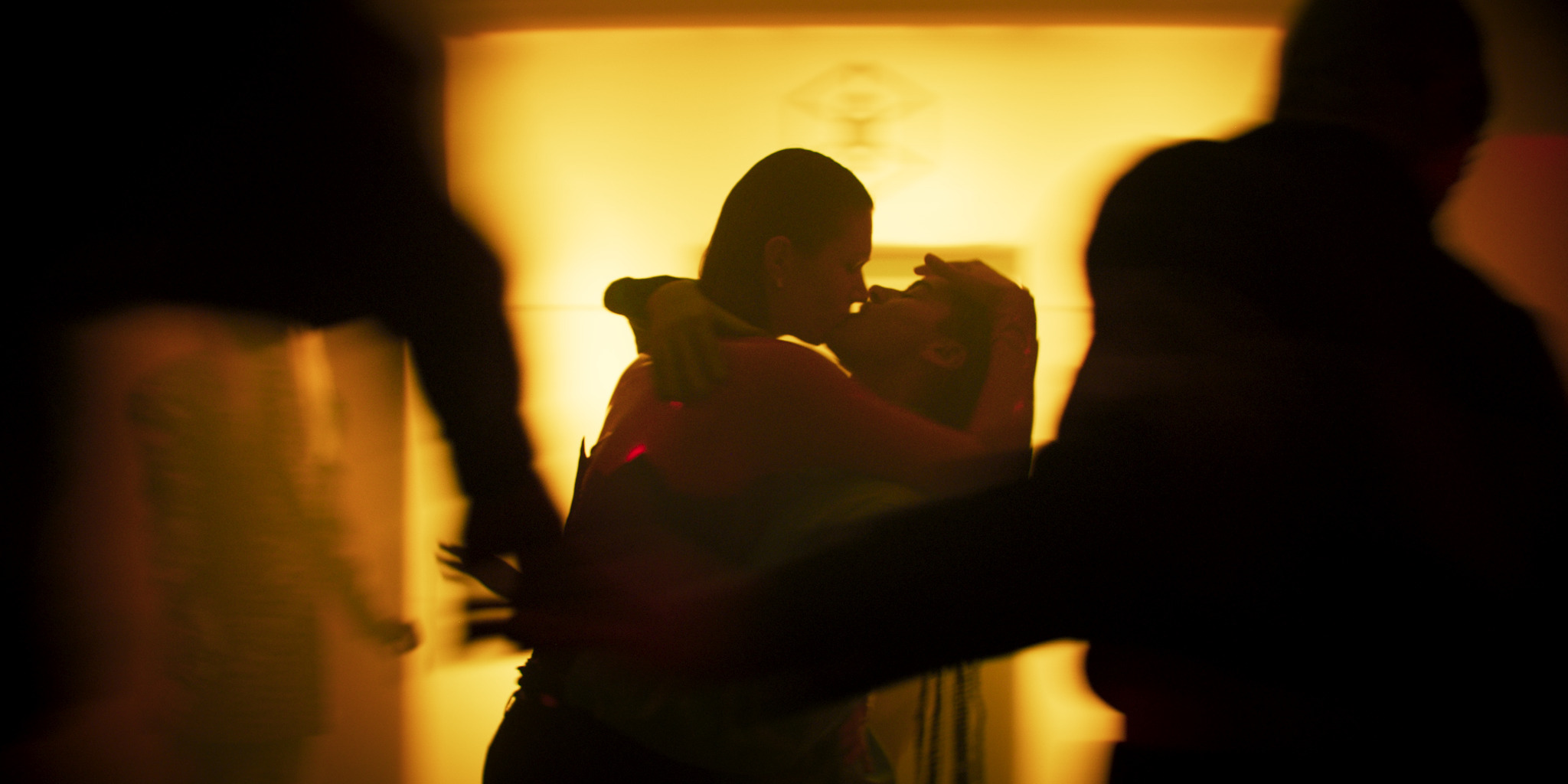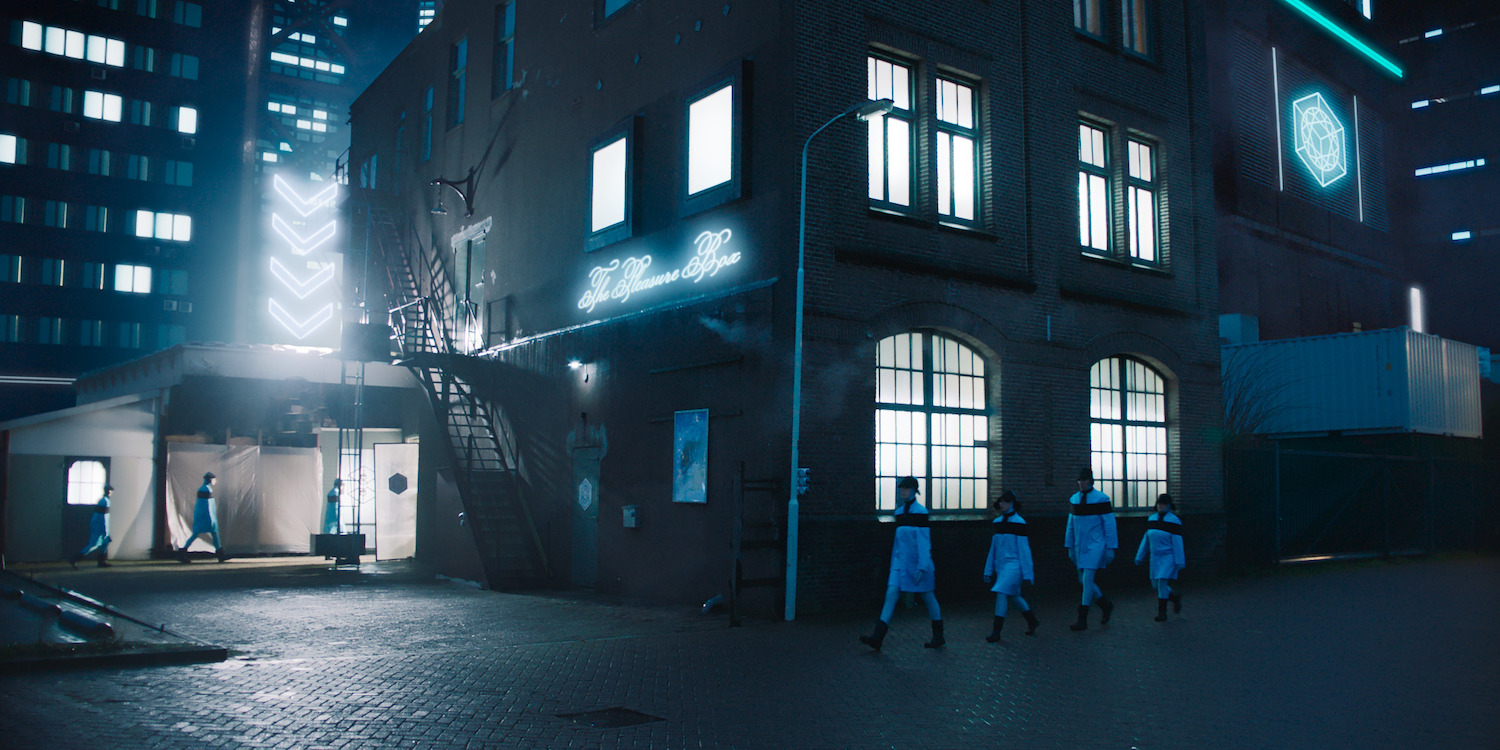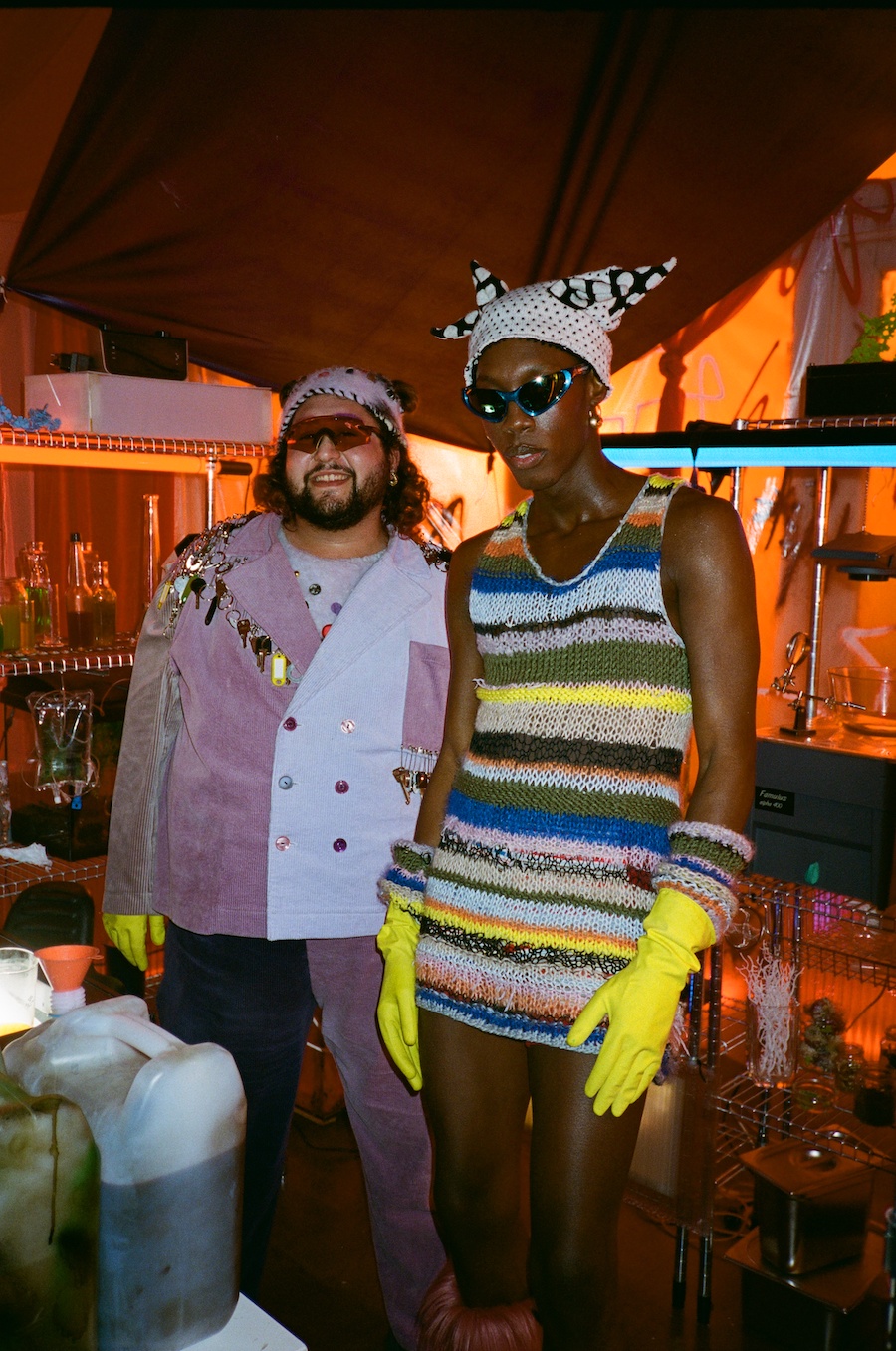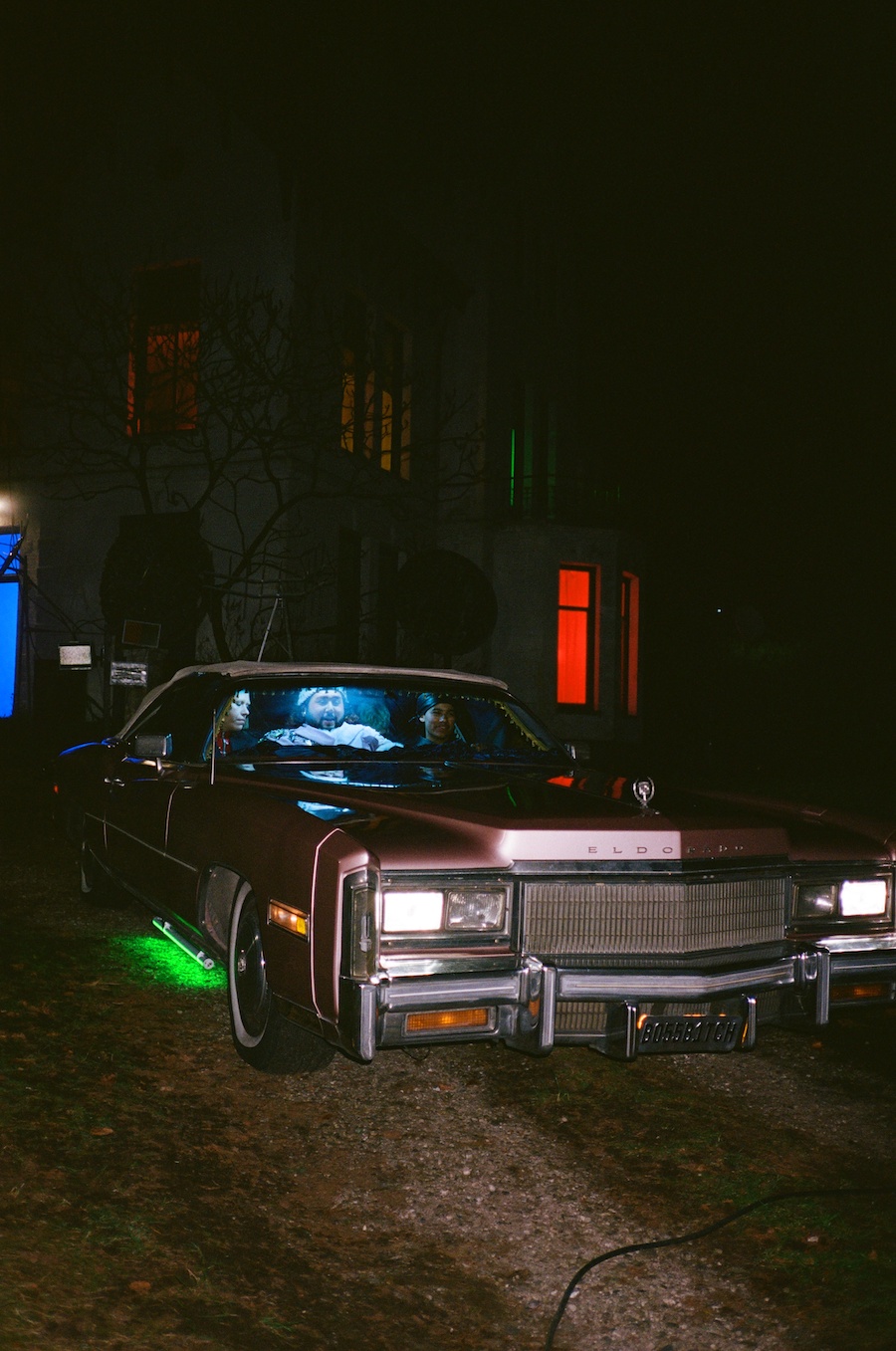The Mila V universe just got bigger.

Day after day Mila V proves that anything she wants to do, she’ll do. From 4 EPs to collabs to her Glamcult NIGHT issue feature, the Mila V universe had just gotten bigger – yes, you heard us right. If you didn’t get the memo, Mila debuted her first fiction film, Memory Dealers, at IFFR. Memory Dealers a gangster sci-fi film exploring the quest for balance in the push and pull of hedonism and limitlessness. Oh but there’s more. Mila also produced the movie’s entire soundtrack which luckily for us will be part of her new EP – more deets coming soon ;). We got the chance to catch up with Mila V to discuss all things Memory Dealers. And mark your calendars, because this Saturday March 9th, the film will be available on NPO 3 for all of us to enjoy <3.
Hey Mila! How have you been? What have you been up to since the last time we saw you?
Well, Memory Dealers premiered at IFFR of course! And it was super fun! Also, I’ve just been creating new concepts and shooting new videos for my EP that’s coming out, which is also partially the soundtrack for the movie 😉
Ahh yes that’s so exciting and congrats on showing at IFFR!! Tell me more about how Memory Dealers came to life??
So it was a concept I created together with Jessica van Halteren, with whom I collaborate a lot. I was asked to pitch for a 45-minute film for VPRO and so we created a sci-fi concept about a world where people’s memories were deleted. And, well, I was chosen! Jessica and I had made short films together but they were all pretty abstract and never longer than 10 minutes. So it was the first time we did a proper fiction film with a full script, actors, and everything… so that was a ride! Such an exciting new thing to delve into.
Then I started working together with the scriptwriter, Nena van Driel, and she wrote the scenario which led to a bigger metaphorical concept exploring extreme highs and lows and the gravity towards extreme hedonism and the absence of boundaries.
How and where did you find your inspiration?
Well, for the initial concept, Jessica and I worked a lot with visuals. Instead of starting with a story, we started with images. I didn’t go to traditional film school so for me it’s always about starting with visual research. Actually, on the wall in my studio, we created visual moods and put them into categories. We had one called premodern illusions, and from that we saw a narrative and started writing. Maybe it’s a bit of an unusual way because I wasn’t taught the standard procedure, ahah.
But it works! Something I really love about your films is the intertextuality you infuse them with. There’s a need to look between the lines. We find a sort of continuity in your aesthetic choices, from the neon psychedelic colours to the electronic music. How do you translate aesthetics into meaning?
Everything tells a story. The costumes can tell a story, they can tell a lot about the characters and their environment, as well as the set, which can convey a message, a subliminal message, for example. Someone I really look up to as a filmmaker is Gregg Araki and he puts a lot of subliminal messages in his sets. Also, light can of course create a mood. In my movie, for example, there’s a pre-rewind city and a post-rewind city. The pre-rewind city has a lot of very bright colours, which feel very warm and full, and after the rewind, we’re stripped of colour and it’s all grey and monotone.
I wanna go back to what you said before about the highs and lows. In Memory Dealers, there’s a clear interaction between control and pleasure. Is this a theme that you’ve explored throughout your artistic journey?
Yeah this interaction has always played a role in my work. From very early on, for example, in Mind Fish, we tried to explore finding peace in extreme, overstimulated surroundings. And for Memory Dealers, I really wanted to explore how everything has two sides. So sometimes you’re like, “Oh, this is good” or “This is bad,” but in the movie, there’s a sort of positive spirituality to the hedonism but there’s also a downside to it.
So throughout the movie, there’s a lot of juggling between the two – I obviously can’t tell the end – but no clear side is chosen.

In the film there’s a clear conversation about power. We have, for example, this group of greedy businessmen who take away everything human about society. On the other hand, we have rebels like Teo, whose aim is to give back to the people. Tell me about the political aspect of your latest project.
It’s a commentary on the current capitalistic climate and a message about how it affects people’s mental states, which is portrayed through different layers in the film. It sheds light on the duality that’s inherent in everything.
I am also curious about your creative process. Does your drive to create come from reality and being present or from escaping and channelling other dimensions of yourself?
You know I used to escape a lot, I was always daydreaming to an extent that didn’t make me present, but it also gave me a lot of inspiration. Like as soon as I heard a sound or saw an image, I would picture a whole movie or video concept in my head. But over the years, I think I learned this was more of a survival mechanism, so I’ve learned, especially in the past few years, to be more present and not take all of my creativity from not really being here. And I guess that’s also a story of balance, how can you be present and take inspiration from reality while also fantasising and trying to channel different dimensions that might be more unspoken or distant unless you are able to connect to them.
Can you recall a special memory from the filming process?
Definitely! I think the craziest thing was when we were filming the car scene and we were driving out of the city in Amsterdam Noord. I was in a truck with the camera that we were operating, and then in front was the Cadillac. At one point, in the back, I saw the apartment building where my dad lived – he passed away 4 years ago. On the weekends, I would go there and watch the same taped movies, so I was like, “This is kinda crazy, being here and filming my first film while looking out on the apartment building where I watched so many films that inspired me.”


Yeah, that’s really special… and what’s your favourite scene from the movie?
Lemme think… There are two that come to mind. I really like the opening scene which is linked with the trip scene where you kind of disappear into the memory. I think there’s a mood being set with the colours and the voiceover. It’s also like my older work, kind of more experimental and more about creating a mood with the music as well. But I think another scene I really like is when Tiktak and Teo are in a cafe and it’s rewinded. They are having a conversation where Teo is trying to convince Tiktak to come back to the group and there’s a sort of dynamic there – their body language is just amazing – and we get to see the tension between them but also how much they want to be with each other.
What advice would you give to young filmmakers?
Really try to find your own style and way of doing things while keeping in mind how things are done… but also throwing that off the table. It’s scary to do so, but when people stick too much to the rules of filmmaking, then you get a lot of the same stuff. I guess it’s cliche but rules are meant to be broken. When someone says, “No, you can’t do that in a film,” then you can just be like, “Well… I’m gonna do it,” and maybe something really original comes out of it.
Words by Agata Villa
Images courtesy of the artist